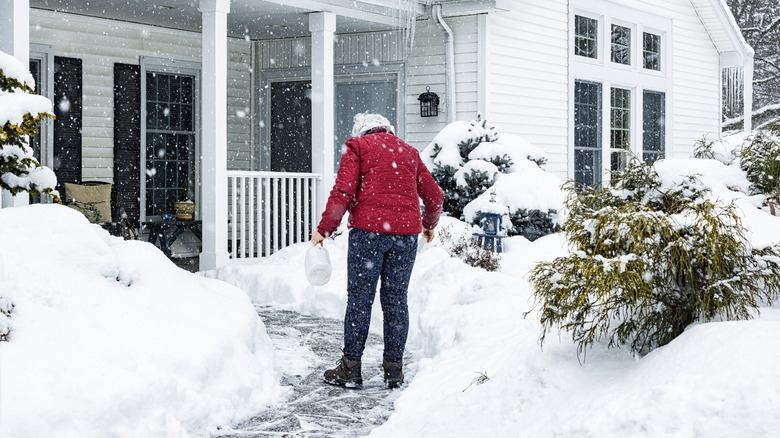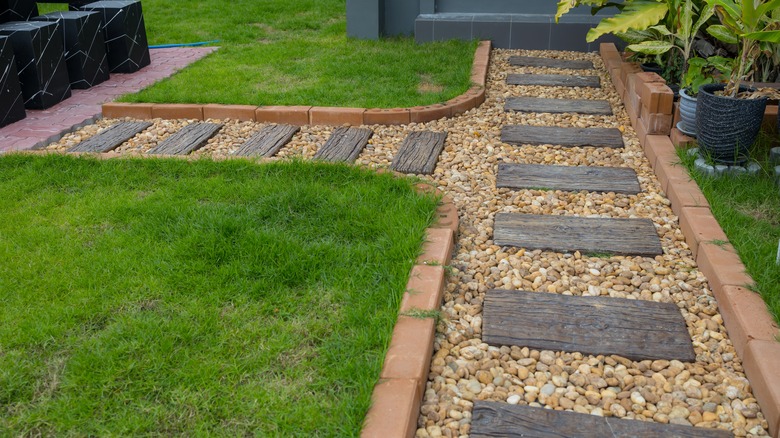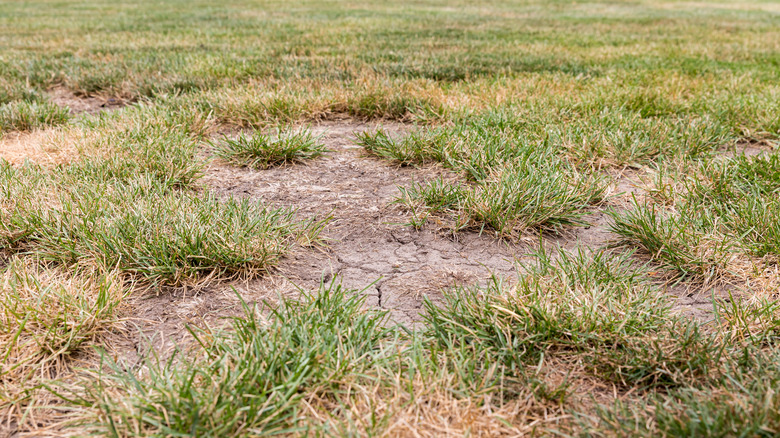Avoid This Snow Shoveling Mistake That Can Damage Your Lawn
Shoveling snow is a strenuous (but necessary) task that is important for keeping your driveway and sidewalks safe. To make a freshly shoveled driveway a little extra slip-resistant, most people also lay down a bit of road salt to melt any remaining ice. While salt is great at getting rid of ice and preventing falls, the one bad thing about road salt is that it can damage your grass. This happens because as the snow melts, it can mix with the salt and then run into your lawn. This causes salt to build up in the soil, which can prevent your grass from getting water, no matter how hydrated the area is. This then causes drought-like symptoms where your grass turns brown and eventually dies.
However, because salting driveways and roads is an important part of keeping everything running in winter in much of the northern U.S., we can't simply stop using road salt. Luckily, there are a few things you can do to help protect your lawn from salt damage so that it stays healthy. The first and easiest method is to simply not overuse de-icing salt. This is important because most people use much more road salt than they need. In fact, a coffee cup of road salt is enough to treat an average double-car driveway.
Other ways to protect your lawn from road salt
If you are having a hard time using less salt on your driveway, you can try mixing road salt with another material to help you use less salt while also adding some extra traction. Sand, coffee grounds, and cat litter are all commonly mixed with road salt to help spread it further.
However, sometimes, laying down less salt is simply not a safe option. Luckily, there are also a few other ways you can protect your grass from road salt. The first is to lay down a protective layer of burlap over areas that often get salt damage. This should be done before the first snow of the year and should cover the outer border of your lawn — the area that is most likely to be damaged by salt. If you can't find burlap, another option is to use landscape fabric from your local garden center. If you want a more permanent barrier, you can line the edge of your lawn with a stone border.
Lastly, you can also switch to a less harsh type of salt. The most common salt used on roads is sodium chloride. However, you can also use road salt that is made from potassium chloride because it is gentler and less likely to harm your lawn. The downside of potassium chloride is that it is more expensive than traditional road salt.
How to save grass that has salt damage
Preventing salt damage in your lawn is great — but what if your grass has already been burned by road salt? As it turns out, there are a few ways to treat salt-damaged grass, and which one you choose will depend on how serious the damage is.
The first thing you should do if you know an area of grass has been damaged by road salt is to try and flush the salt out of the soil with water. This can be done with your garden hose in a low-pressure setting. Watering damaged grass with high-pressure water often only causes further stress to the plants. So, it is important to be gentle with your damaged lawn and water it well for two to three days. If successful, this will wash away the salt and bring your grass back to life.
However, if this doesn't work, you may need to treat your soil and start over. To do this, first, remove the dead grass and then add a soil repair conditioner to the damaged area. Usually, pelletized gypsum does the trick and is easy to find at your local home improvement store. Once the soil damage has been reversed, you can lay new grass seed in the area.


